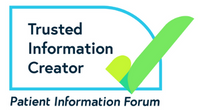Symptoms & Effects of 5q Spinal Muscular Atrophy – Type 4
Symptoms & Effects of 5q Spinal Muscular Atrophy – Type 4
This page is for families, friends and healthcare professionals who want to know more about SMA Type 4.
SMA Type 4 is form of 5q SMA. Please see our guide What is 5q SMA? > for information about causes, diagnosis, inheritance and how many people are affected.
The symptoms and effects of SMA Type 4 begin in adulthood.
Each person is affected differently but, in general, symptoms can include:
- tired, aching muscles
- a feeling of heaviness
- numbness
- cramp
- a slight shaking of the fingers and hands
- fatigue
SMA Type 4 usually progresses slowly over time. It causes increased muscle weakness with age. This may impact on daily living activities, such as walking, dressing and bathing.
SMA Type 4:
- rarely affects swallowing or breathing
- does not affect intelligence
- life expectancy is not affected¹.
SMA Type 4 affects the lower motor neurons. This is different from Motor Neurone Disease (MND), also known as Amyotrophic Lateral Sclerosis (ALS) which affects both the upper and lower motor neurons. Though SMA is also classed as a ‘motor neuron disease’, it is not MND. Whereas MND is almost always life-limiting, SMA Type 4 is not.
Access to treatments for those clinically diagnosed with SMA Type 4 varies between countries. This may depend on the decision made by the regulatory authorities. For example, in some countries access is approved for all who have 5q SMA. It may also depend on how distinct the ‘onset of symptoms’ age boundary is considered to be between Type 3b and Type 4.
In the UK, access to NHS-funded drug treatment is only possible for those who have a clinical diagnosis of SMA Type 1, 2 or 3 and who meet the eligibility criteria. No drug treatments are currently available in the UK for people who have been given the clinical classification diagnosis SMA Type 4. Discussions leading to this diagnosis should include a careful review of the history of the person’s onset of symptoms.
In 2024 / 5, the National Institute of Health and Care Excellence (NICE) is reviewing whether the NHS in England will continue to fund the two drug treatments, nusinersen and risdiplam. SMA UK is advocating for adults diagnosed with SMA Type 4 to have access to drug treatment. You can read more about the review >.
Support and advice can help manage the symptoms and effects of SMA Type 4. Nationally and internationally expert clinicians, researchers and people living with SMA are working together to review and update guidelines for best supportive care and management of symptoms.
- See: SMA Care UK >
1. Lunn MR & Wang CH (2008) Spinal muscular atrophy. Lancet, 371: 2120-2133
Was this page useful?
 Version 5
Version 5
Author: SMA UK Information Production Team
Last updated: June 2025
Next full review due: June 2028
Links last checked: June 2025
This page, and its links, provide information. This is meant to support, not replace, clinical and professional care.
Find out more about how we produce our information >.
